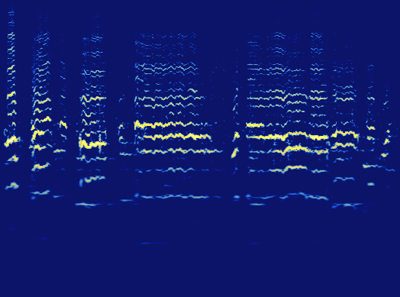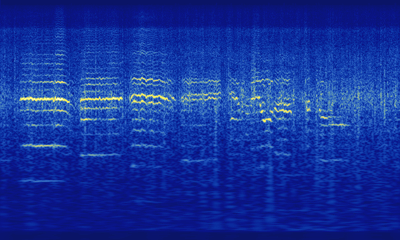Graphical sound denoising challenge results
And the winner is Iain Fergusson with the following entry made with GIMP:

Extract of the original song:
Iain's result:
Iain obtained this excellent result and won a free copy of Photosounder worth €99 by following these steps :
You can download the full denoised song here.

Extract of the original song:
Iain's result:
Iain obtained this excellent result and won a free copy of Photosounder worth €99 by following these steps :
- Find selection of sound which is just noise, copy and paste to new layer
- Pixelate it with pixel height 1, and width as wide as the layer is
- Resize noise selection layer to fit entire image
- Set noise selection layer to 'subtract' - adjust curves if you need more subtraction
- 'Copy visible'
- Paste this into a mask on the original image
- Create black layer below the original
- Adjust curves on original layer mask to push light parts to white, and carefully, push the very darkest parts to black
- Save image
You can download the full denoised song here.
Labels: challenge, denoising, experiments, filtering, lossless


